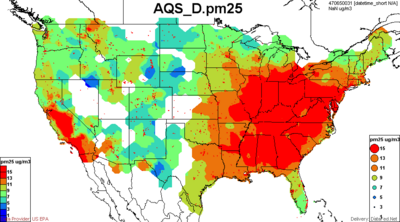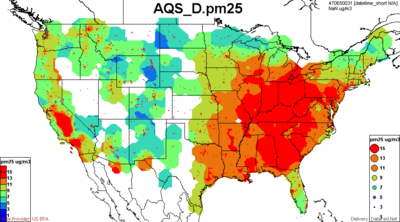|
|
| (7 intermediate revisions by the same user not shown) |
| Line 1: |
Line 1: |
| | [[Exceptional_Air_Pollution_Event_Analysis_Community_Workspace|< Back to Exceptional Event Workspace]]<br> | | [[Exceptional_Air_Pollution_Event_Analysis_Community_Workspace|< Back to Exceptional Event Workspace]]<br> |
| | + | |
| | + | [[Evidence for Flagging Exceptional Events|Required Evidence for Flagging Exceptional Events]] |
| | __TOC__ | | __TOC__ |
| − | ==What Evidence is Required to Flag an Exceptional Event? (EE)==
| |
| − |
| |
| − | The Exceptional Events Rule requires states that flag data to satisfy the requirements of 40 CFR 50.14 (c)(3)(iii) to provide evidence that:
| |
| − | # The event satisfies the criteria that it was '''''not reasonably controllable or preventable'''''
| |
| − | # There would have been no exceedances or violation '''''but for''''' the event.
| |
| − | # The event is associated with a measured value in '''''excess of historical values'''''.
| |
| − | # There is a '''''clear casual relationship''''' between the measured value and the event
| |
| − |
| |
| − | === 1. Evidence: Not Reasonably Controllable or Preventable ===
| |
| − | This line of evidence needs to establish that the event is 'not reasonably controllable or preventable'. The EE Rule identifes different [[EPA_Example_EE_Categories| categories of uncontrollable]] events:
| |
| − | * Exceedances Due to Transported Pollution (Transported African, Asian Dust; Smoke from Mexican fires; Smoke & Dust from Mining, Agricultural Emissions)
| |
| − | * Natural Events (Nat. Disasters.; High Wind Events; Wildland Fires; Stratospheric Ozone; Prescribed Fires)
| |
| − | * Chemical Spills and Industrial Accidents; Structural Fires; Terrorist Attack
| |
| − |
| |
| | | | |
| − | [[image:ForestSmokePic.png|200px]] [[image:DustFrontPic.png|200px]] [[image:Volcano.png|200px]] [[image:July4th_04_S.png|200px]]
| + | === PM2.5 Concentration Trend 2000-2006 === |
| | | | |
| − | === 2. Evidence: No Exceedance or Violation ''But For'' the Exceptional Event ===
| + | Three-year aggregates of PM2.5. Left Images: Annual average PM10: Right Images: 98th Percentile. |
| − | According to the EE Rule, observationas can be EE-flagged if the concentration exceeds the standard due to the exceptional event.
| |
| − | * The leftmost figure shows a case when the 'exceptional' concetration raises the level above the standard.
| |
| − | * In the next case, the concentration from controllable sources is sufficient cause the exceedance. Such an exceedance is not a 'but for' case and should not be flagged.
| |
| − | * In the third case, there is no exceedance, hence no justification for EE flag.
| |
| − | [[Image:EE_ButForSchematics.png|200px|The 'exceptional' concetration raises the level above the standard]]
| |
| − | [[Image:Image-EE NoButFor1Schematics.png|200px|The 'exceptional' concetration raises the level above the standard]]
| |
| − | [[Image:Image-EE NoButFor2Schematics.png|200px|The 'exceptional' concetration raises the level above the standard]]
| |
| − | <br>
| |
| − | Illustration Exceptional Events, EE and non-EE events by the EE Rule.
| |
| | | | |
| − | === 3. Evidence: The Event is in excess of the Historical Values ===
| + | Note the remarkable decline of both PM2.5 matric in the period 2000-2006 |
| | | | |
| | <html> | | <html> |
| Line 71: |
Line 50: |
| | </html> | | </html> |
| | | | |
| − | === 4. Evidence: Clear Causal Relationship between the Data and the Event ===
| |
| − | There are multiple lines of evidence that can support the relationship between observations and the event. In the Exploratory Study the following lines of evidence were suggested:
| |
| | | | |
| − | * Chemical Signature
| + | [[Image:2000_04_FRMPM25_Avg.png|400px]] [[Image:2005_08_FRMPM25_Avg.png|400px]] |
| − | * Observed Pollutant Source and Transport
| |
| − | * Spatial Pattern of Pollutant
| |
| − | * Temporal Pattern of Pollutant
| |















